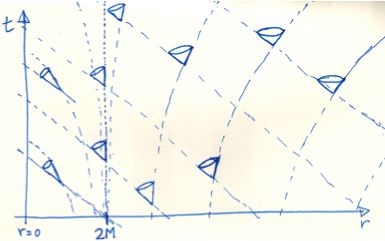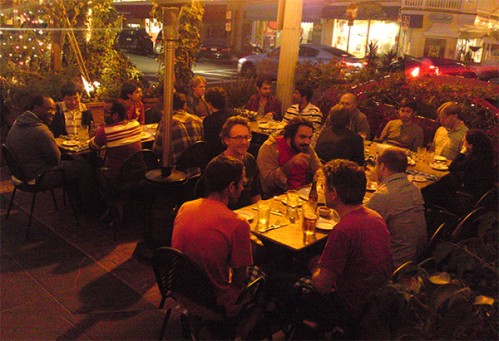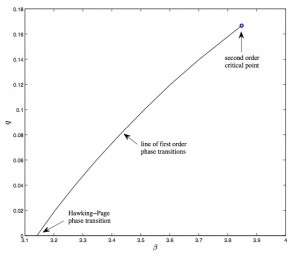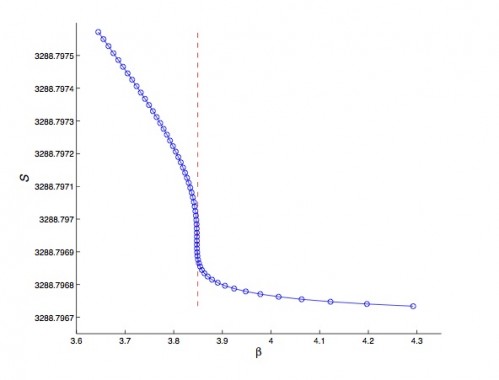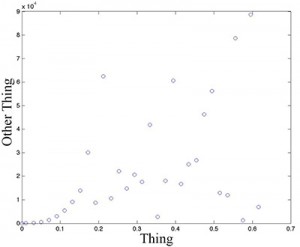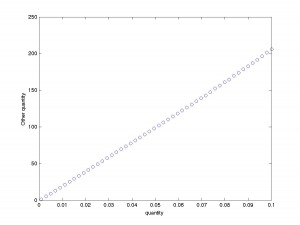Festival of Joe
 Early evening. Cocktail (made with Hendricks gin, muddled tangerine, and basil…). Roast pork on the way. Old haunt.
Early evening. Cocktail (made with Hendricks gin, muddled tangerine, and basil…). Roast pork on the way. Old haunt.
Where am I? At Roy’s, in Santa Barbara. I’m here for a two day celebration of the work of Joe Polchinski, one of the giants of my field. It all begins tomorrow, and I am taking the opportunity to have a quiet bit of time in an old haunt. I was a postdoc of Joe’s back in the mid 1990s, just when the world of theoretical physics was waking up to the awesome power of D-branes. D-branes are a special type of dynamical extended object in physics, and Joe had discovered their importance for string theory just around that time. Roy’s opened around that time too, if I recall, and a group of us became regulars, helping it along in those early days when it was smaller than it is now. (That small group included my friend and fellow postdoc Andrew Chamblin, who passed away some years ago.)
 So I am here to help celebrate Joe’s work on the occasion of his 60th (hard to believe that number, frankly), and it will be good to see all the people who show up, and of course it’ll be excellent to see Joe. Part of my help in the celebrations is to organize and run a panel about D-branes, which will be on at 11:00 tomorrow. I’ll be reflecting a bit on the good old days when D-branes really broke, and turned out to be the key tool of the Revolution that took place in the field. In lectures and writings from that time and long after I used to refer to them as the Heroes of the Revolution, and in honor of that and of Joe I have named this session D-Branes, Tools of the Revolutionary, or something like that. Joe helped bring about the revolution, and his tools were D-branes, you see.
So I am here to help celebrate Joe’s work on the occasion of his 60th (hard to believe that number, frankly), and it will be good to see all the people who show up, and of course it’ll be excellent to see Joe. Part of my help in the celebrations is to organize and run a panel about D-branes, which will be on at 11:00 tomorrow. I’ll be reflecting a bit on the good old days when D-branes really broke, and turned out to be the key tool of the Revolution that took place in the field. In lectures and writings from that time and long after I used to refer to them as the Heroes of the Revolution, and in honor of that and of Joe I have named this session D-Branes, Tools of the Revolutionary, or something like that. Joe helped bring about the revolution, and his tools were D-branes, you see.
I was lucky to be here as a postdoc at that time, and happily I had the good sense to be quite sure that it was going to be important to quickly spread the […] Click to continue reading this post

